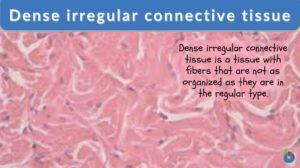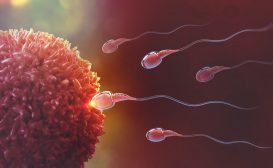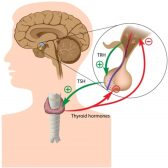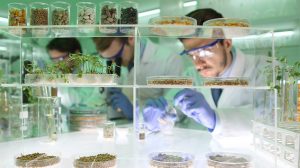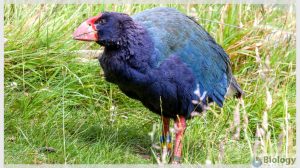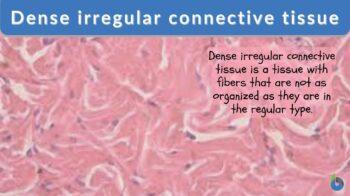
Dense irregular connective tissue
n., plural: dense irregular connective tissues
[dɛns ˈɹɛɡjəlɚ kəˈnɛktɪv ˈtɪʃu]
Definition: dense connective tissue characterized by extracellular fibers that are variably arranged
Table of Contents
Dense Irregular Connective Tissue Definition
Dense irregular connective tissue is one of the two major types of dense connective tissues; the other is dense regular connective tissue. The irregular type, as the name implies, is a kind of dense connective tissue in which the extracellular fibers (especially, collagen fibers) are variably arranged in contrast to the dense regular connective tissue that has fibers arranged in a regular fashion (i.e, in parallel bundles).
Nonetheless, both tissues are characterized as being “dense” or tightly-packed, as opposed to other types of connective tissue proper, which are “loose“.
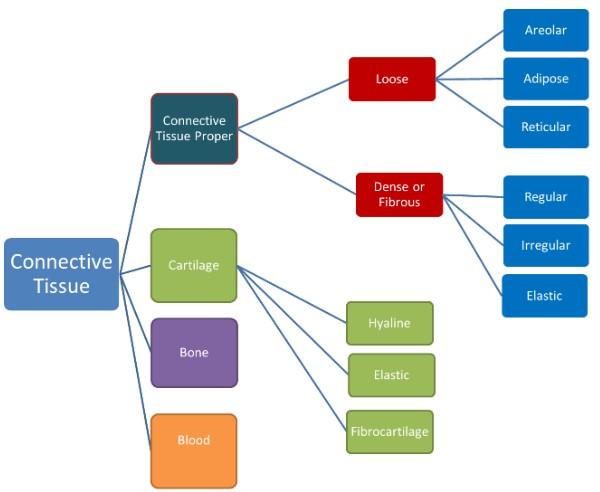
What is a dense regular connective tissue? How does it differ from dense irregular tissue? Ask our community. Join our Forum: Smooth muscle vs dense regular connective tissue.
Organisms are made up of different body parts. The “building blocks” of the organism are known as the cell. Cells, which are similar in function and make will actively work together to form tissues. There are many different types of tissues that are made up of different materials. One of them is dense connective tissues.
Dense connective tissue, also known as dense fibrous tissue, is a form of connective tissue that is mostly composed of fibers. The fibers are mostly made up of type I collagen. Rows of fibroblasts, fiber-forming cells that make the fibers, are crammed between the collagen strands.
Tendons and ligaments are strong, rope-like structures formed by dense connective tissue. Tendons link skeletal muscles to bones, whereas ligaments connect bones at joints. Ligaments have more elastic fibers and are more stretchable than tendons. Dense connective tissue is also found in the skin’s bottom layers (dermis), where it is structured in sheets.
Examples of dense connective tissue include both regular and irregular connective tissues. Dense, regular CT is a white, pliable tissue with firmly packed collagen fiber bundles. All of these fibers travel in one direction and are parallel to the direction of pressures exerted on the body portion where the tissue is situated.
On the other hand, the dense irregular connective tissue is a kind of thick connective tissue where collagen and other extracellular fibers are not organized in parallel bundles (as in the dense regular connective tissue).
A microscopic view of dense irregular connective tissue can be seen in Figure 2 below.
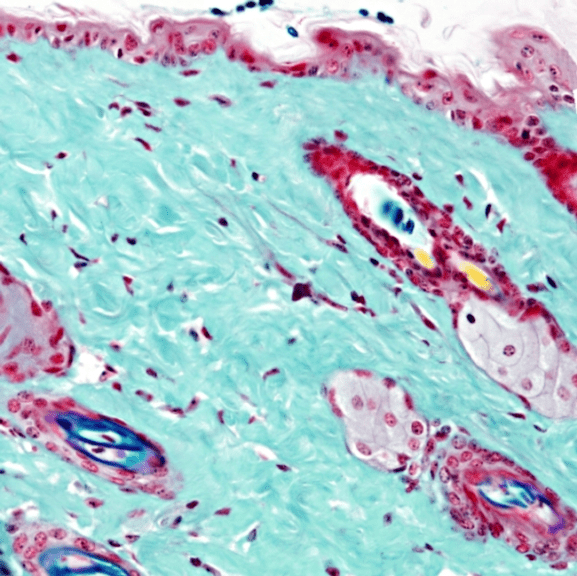
The form of connective tissue known as dense connective tissue is mostly made up of fibers, particularly type I collagen. These fibers are produced by the fibroblasts in the matrix. In contrast to the other form of connective tissue, which is loose connective tissue, this type of connective tissue proper is dense or tightly compacted, as the name indicates. Dense regular and dense irregular connective tissues are examples of dense connective tissues.
Contrary to dense regular connective tissue, dense irregular connective tissue has collagen fibers that are not organized in parallel bundles. However, collagen fibers make up the majority of both the regular and irregular types. Collagen fiber makes up a larger amount of each of them than cell components or ground material. The most common cell type is the fibroblast, which produces the extracellular fibers, particularly collagen.
Dense irregular connective tissue is a type of dense connective tissue in which the extracellular fibers (in particular, collagen fibers) are not arranged in parallel bundles (as opposed to the dense regular connective tissue whose collagen fibers are arranged in a parallel fashion). Nevertheless, similar to the dense regular type, the dense irregular connective tissue is made up mostly of fibers (especially, collagen), which are produced by the matrix’s fibroblasts.
Structure
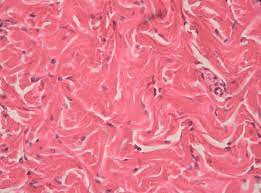
Dense irregular connective tissue histology (Figure 3) examines the dense woven network of collagenous (and some elastic) fibers in a fluid matrix that characterizes this kind of tissue. Dense irregular collagenous connective tissue fibers are not organized in parallel bundles like those in dense regular connective tissue.
The collagenous fibers make up the majority of dense irregular connective tissue. These collagen tissues are less ground than loose connective tissue. Fibroblasts are the most common cell type and are found in small numbers throughout the tissue.
Small quantities of pulverized material surround the type I collagen fibers of the thick irregular connective tissue. A network of elastic fibers exists among the collagen fibers to limit the tissue’s distensibility. Amorphous and gel-like in texture, ground material surrounding cells. It comprises components such as proteoglycans and sticky glycoproteins, and it is created by fibroblasts, just like collagen fibers.
Collagen fibers have high tensile strength and so play a significant role in support. These collagen fibers are oriented unsystematically in a compact interwoven 3-dimensional web for dense irregular connective tissue. Dense irregular connective tissue is extremely strong due to its three-dimensional structure.
Dense Irregular Connective Tissue Function
This form of connective tissue is usually found in the dermis’s reticular layer (or deep layer). It is also found in the sclera and deeper skin layers. Because of the large proportion of collagenous fibers, dense irregular connective tissue offers strength, making the skin resistant to tearing caused by stretching pressures from various directions.
Dense irregular connective tissue also makes up the digestive tract‘s submucosa, lymph nodes, and various forms of fascia. Other examples include bone periosteum and perichondrium, as well as testicular tunica albuginea. The fiber bundles in the submucosa layer run in several planes, allowing the organ to resist severe stretching and distension.
Collagenous fibers make up the majority of the tissue in dense irregular CT. Fibroblasts are rare and frequently the sole type of cell present. There is very little ground stuff present. The tissue’s strength is due to the amount of collagenous fibers.
The fibers are often organized in bundles in different orientations (thus irregular), allowing the tissue to tolerate a variety of pressures. Dense irregular CT is found on the exterior of numerous organs, in the dermis of the epidermis, and as a discrete layer within several organs termed the submucosa.
Dense Irregular Connective Tissue Location
Where is the dense irregular connective tissue found? Dense irregular connective tissue is found in the skin’s lowest layers (dermis) and the eyeball’s protective white coating layer. Dense irregular fibrous connective tissue can be also found in joint capsules, the connective tissue that envelops muscles (muscle fascia), and the skin’s dermis. It is resistant to impact.
Watch this vid about dense irregular connective tissue:
Nice to Know!
Dense irregular connective tissue is one of two types of dense tissues and one of six types of connective tissues in the human body. The other types of connective tissues are adipose, elastic, cartilage, bone, and blood. Unlike bones and adipose tissue that are vascular, the dense connective tissues are poorly vascularized; the cartilage, in turn, entirely lacks blood vessels.
Answer the quiz below to check what you have learned so far about Dense irregular connective tissue.
References
- Animal tissues. Connective tissue proper: Dense irregular. Atlas of Plant and Animal Histology. (n.d.). Retrieved June 26, 2022, from https://mmegias.webs.uvigo.es/02-english/a-imagenes-grandes/conectivo_irregular.php
- Connective Tissue. (2008, November 7). https://web.archive.org/web/20081107231710/http://www.courseweb.uottawa.ca/medicine-histology/English/SS_BasicTissues/Connective_Tissue.htm
- Dense connective tissue. (n.d.). Kenhub. Retrieved June 26, 2022, from https://www.kenhub.com/en/library/anatomy/dense-connective-tissue
- Dense regular connective tissue—Definition and Examples—Biology Online Dictionary. (2022, June 23). Biology Articles, Tutorials & Dictionary Online. https://www.biologyonline.com/dictionary/dense-regular-connective-tissue
- Paxton, S., Peckham, M., & Knibbs, A. (2003). The Leeds Histology Guide. https://www.histology.leeds.ac.uk/tissue_types/connective/connective_tissue_types.php
©BiologyOnline.com. Content provided and moderated by Biology Online Editors.

